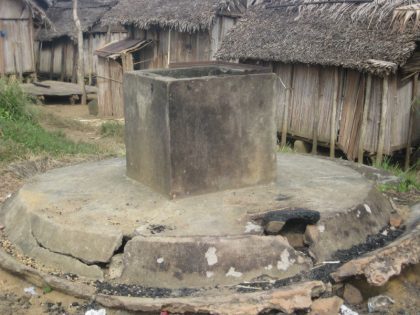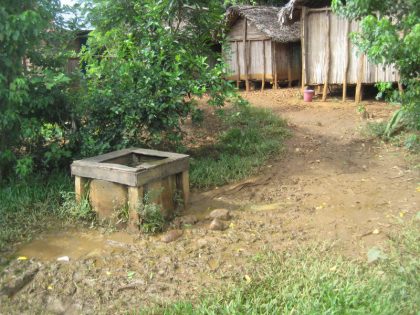Location
Tsivangiana fokontany, Tsivangiana commune, Vatomandry district, Antsinanana region, Madagascar
Community Description
The people of Tsivangiana live along the east coast of Madagascar, separated from the Indian Ocean by about 20 kilometers of degraded rainforest. Most farm rice or fish in nearby streams. The wood huts and thatch roofs catch fire quite easily, and the community has been ravaged by two large fires in recent months.
There are two neighborhood groups looking to improve their water supplies. The first neighborhood is located along Tsivangiana’s largest stream (about 40 feet wide), where everyone bathes, washes clothes, and uses the restroom. The neighborhood well broke in 2010, so for the past three years, the people have been fetching water from the stream. This is a major risk to their health and has led to innumerable illnesses.
The second neighborhood, located across town, uses a well whose poor design causes the water to be contaminated, and those who fetch the water to be at risk of falling in.
 Project Description
Project Description
This project is to improve two wells in the Tsivangiana fokontany.
Each neighborhood has decided on a course of action. In the first, the well water is dirty because the drainage apron cracked, allowing in all sorts of ground-level filth. However, below ground the well is quite well built: it is plenty deep, bringing water year-round, and its molded concrete rings are solid.
To fix the problem, the men will remove the current wellhead and drainage apron, descend into the well to clean out as much of the trash and contamination as possible, and build a new, sturdier wellhead and drainage apron.
The wellhead will be covered with a sliding cover, to protect against contaminants. The drainage apron will have a 3-meter diameter with a canal on its outer edge to collect all water and funnel it towards a rubble-filled soak-away pit, all of which will be enclosed in a fence built with wood from local eucalyptus trees.
The neighborhood group will provide all labor and all materials that are available locally, such as sand, wood, and rocks. They have chosen a foreman and team to carry out the work.
 Water Charity funds will pay for materials, including cement, reinforcing iron rods, gravel, and 4/7 stones.
Water Charity funds will pay for materials, including cement, reinforcing iron rods, gravel, and 4/7 stones.
Likewise with the second group, whose material requests are similar in spite of some differences in the work to be carried out. This group is led by Donat, the same carpenter who built the hospital latrine in partnership with Water Charity.
Because the people nearby have no better options, this second well is already in use. However, its wellhead rises only 50 centimeters above the ground and has no cover, and there is no drainage apron. These deficiencies allow contaminants to enter the well both at and below ground level. Also, people fetching water – especially the children who are often sent to do so – are at risk of falling in; some even stand on the well’s headwall!
The group plans to raise the wellhead and add a cover, and then, like the other group, add a drainage apron, and soak away pit, and fence.
Project Impact
1,000 people will benefit from the project, consisting of 500 people in each neighborhood.
Peace Corps Volunteer Directing Project
Eddie Carver
Comments
The renovation of the wells is a cost-efficient to continue the use of the existing resources, turning them into safe water supplies for the community.
Eddie previously completed the Tsivangiana Composting Latrine Project – Madagascar.
Dollar Amount of Project
$555.00
Donations Collected to Date
$555.00
Dollar Amount Needed
$0.00 – This project has been fully funded, through the generosity of Michael and Carla Boyle, of Nelsonville, OH, USA.
This project has been finished. To read about the conclusion of the project, CLICK HERE.